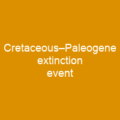Edmontosaurus: The Last of the Giants
Imagine a world where dinosaurs roamed the Earth, and among them was Edmontosaurus, one of the last non-avian dinosaurs to walk the land before the great extinction event. This genus of hadrosaurid dinosaur is not just a name but a fascinating story of evolution, discovery, and mystery.
Discovering the Giants
Edmontosaurus was first discovered in 1912 by Levi Sternberg, who found two partial skeletons in Alberta. These fossils were named Edmontosaurus regalis and Edmontosaurus annectens, marking the beginning of a long journey to understand these giants.
The Naming Game
Initially, the naming of Edmontosaurus was a bit chaotic. In 1902, Hatcher revised hadrosaurid genera and considered them synonyms of Trachodon. Gilmore reassessed in 1915, reintroducing Thespesius for Lance-age hadrosaurids. By 1917, Lambe coined Edmontosaurus based on two partial skeletons from Alberta.
Species Diversity
Edmontosaurus currently has two valid species: E. regalis, known only from the Horseshoe Canyon Formation of Alberta, and E. annectens, found in the Frenchman Formation of Saskatchewan, Hell Creek Formation of Montana, and Lance Formation of South Dakota and Wyoming.
Physical Characteristics
These giants could grow up to 12 meters long and weighed around 5.6 metric tons. Their duck-billed heads were equipped with a wide beak, continually replaced teeth, and unique nasal openings. The stapes bone was also found in some specimens, suggesting binocular vision.
Behavior and Ecology
Edmontosaurus was a terrestrial herbivore that used its broad beak to cut food and retained it through cheek-like structures. Its feeding range would have been from ground level to around 4 meters above. Reports of gastroliths in the hadrosaurid Claosaurus are based on probable misidentifications.
Feeding Mechanics
The prevailing interpretation was that hadrosaurs like Edmontosaurus were aquatic, but this has been rejected due to beak morphology. The tooth structure suggests combined slicing and grinding capabilities, with candidates for ingested abrasives including silica-rich plants.
Evolutionary History
The evolutionary history of Edmontosaurus is complex. Lull and Wright attempted to resolve the taxonomy in 1942 by naming a new genus, Anatosaurus. However, Michael K. Brett-Surman reevaluated the species in the 1970s-1980s, concluding that annectens was actually Edmontosaurus.
Skull and Growth
The skull of E. regalis measures up to 1.18 meters in length, with a duck-bill shape and toothless beak extended by keratinous material. The nasal openings were elongate and housed in deep depressions surrounded by distinct bony rims above, behind, and below.
Life and Death
Edmontosaurus was a social animal, with extensive bone beds suggesting gregarious living in groups. Researchers proposed that E. regalis reached maturity in 10-15 years, while Wosik and Evans found E. annectens to reach maturity in 9 years based on various specimens from different localities.
Health and Injury
The brain of Edmontosaurus was not particularly large for its size, with a cavity only about a quarter of the skull’s length. Tumors, including hemangiomas and osteoblastoma, have been found in Edmontosaurus bones.
Conclusion
Edmontosaurus was one of the last non-avian dinosaurs to exist, living alongside other dinosaurs before the Cretaceous–Paleogene extinction event. Its discovery and study continue to unravel the mysteries of these giants, providing insights into their behavior, ecology, and evolution.

You want to know more about Edmontosaurus?
This page is based on the article Edmontosaurus published in Wikipedia (retrieved on November 28, 2024) and was automatically summarized using artificial intelligence.







